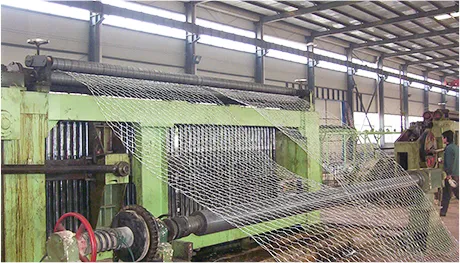-
 Phone:
Phone: -
 Email:
Email:

rockfall netting
Rockfall Netting A Vital Solution for Slope Stability
Rockfalls pose significant risks to infrastructure, human safety, and the environment. They occur when loose rocks and debris become dislodged from cliffs or steep slopes, falling due to gravity. To mitigate these dangers, rockfall netting has emerged as an essential solution in civil engineering and environmental management.
Rockfall netting is a protective measure designed to catch falling rocks before they reach the ground. This form of slope stabilization involves the installation of strong, flexible nets made from high-tensile wire or synthetic materials. The nets are strategically placed over vulnerable slopes, allowing rocks to slide harmlessly onto the netting rather than crashing down onto roads, structures, or populated areas.
The design and installation of rockfall netting are crucial for its effectiveness
. Engineers conduct thorough site assessments to evaluate the slope's geology, the types of rocks present, and the potential for rockfall events. Based on this analysis, they determine the appropriate type and configuration of netting required. Factors such as the slope's angle, vegetation cover, and local climate conditions play a role in this decision-making process.rockfall netting

Rockfall netting systems can be categorized into two main types passive and active systems. Passive systems rely solely on the netting structure to capture falling debris, while active systems may incorporate additional features such as rock anchors or barriers to enhance stability. These systems are designed to withstand various environmental forces, including wind, rain, and seismic activity, ensuring durability and long-term effectiveness.
Another vital aspect of rockfall netting is maintenance. Regular inspections are necessary to identify any signs of wear or damage to the netting. Over time, environmental factors can degrade the materials, leading to potential failures. Timely repairs and replacements can ensure that the netting continues to provide protection against rockfall hazards.
Aside from protecting human life and property, rockfall netting also contributes to environmental conservation. By stabilizing slopes, it helps preserve ecosystems that might be disrupted by frequent rockfalls. Additionally, these systems can mitigate soil erosion, allowing vegetation to thrive in areas that would otherwise be vulnerable to geological instability.
In summary, rockfall netting is a critical intervention for managing the risks associated with rockfall events. Its ability to effectively protect both infrastructure and natural ecosystems highlights the importance of comprehensive land management practices. As our understanding of geological hazards continues to evolve, the implementation of innovative solutions like rockfall netting will remain indispensable in safeguarding communities and preserving the environment.
-
Wire Mesh for Every Need: A Practical SolutionNewsJul.25,2025
-
Steel Fences: Durable, Secure, and Stylish OptionsNewsJul.25,2025
-
Roll Top Fencing: A Smart Solution for Safety and SecurityNewsJul.25,2025
-
Cattle Farm Fencing Solutions for Maximum SecurityNewsJul.25,2025
-
Affordable Iron Binding Wire SolutionsNewsJul.25,2025
-
Affordable Galvanized Wire SolutionsNewsJul.25,2025
-
Wire Hanger Recycling IdeasNewsJul.25,2025








